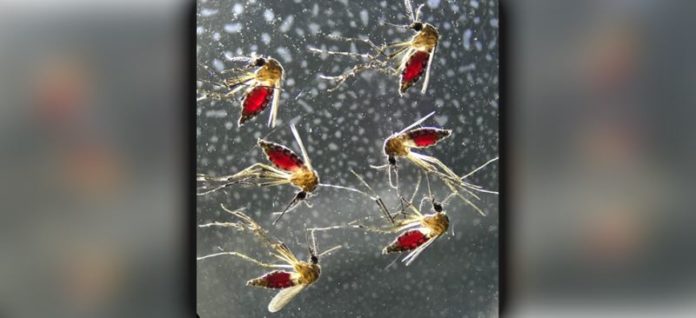Plasmodium Parasite Capitalizes on Manipulated Liver Cells for Survival
Malaria is still one of the most significant burdens to international health with an estimated 440,000 deaths in 2015. While deaths attributed to malaria have significantly diminished over the recent years as a consequence of interventions which have soared, the spread of resistance to current antimalarial insecticides and treatments simplifies the progress that’s been made in eliminating the infectious disease.
The causative agent of malaria is your Plasmodium parasite, an obligate intracellular pathogen that simplifies host procedures to make sure of its own survival. A number of these interactions between the parasite and host remain unknown, especially during the parasite’s evasive liver phase.
Now, in a new study, Duke University research team has demonstrated how this parasite tricks liver cells into pumping out a protein called aquaporin-3, and then steals the protein for itself. They found that by the means of using an inhibitor to disable aquaporin-3, we could curtail the parasite’s ability to reproduce inside the liver.
“This parasite found a way to manipulate the host’s liver cells to make it favorable for this replication event,” said Emily Derbyshire, an assistant professor of chemistry at Duke. “This suggests that maybe we can develop drugs to try to target the host to prevent malaria
.”“The liver stage is a checkpoint, a bottleneck, where it goes from a few dozen parasites to many thousands of parasites, which are released from the liver into the blood where it is amplified into hundreds of billions of parasites,” said Peter Agre, Director of the Johns Hopkins Malaria Research Institute, who was not involved in the study.
“If we could put out the forest fire when it is the smallest possible little campfire, that would be a potential therapeutic breakthrough,” said Agre, who won the 2003 Nobel Prize in Chemistry for the discovery of aquaporins.
Dora Posfai, a graduate student at Duke, initially spent three-hour stretches dissecting infected mosquitos under a microscope, cutting out salivary glands and extracting the parasites hidden inside.
Later, the team infected human liver cells with the parasite, Posfai and Sandeep Dave, a professor of medicine in the Duke School of Medicine, used RNA sequencing to comb through all 20,000 genes in the human genome, searching for genes that are switched on in infected liver cells.
They afterwards investigated the role of one protein that they found in greater numbers called aquaporin-3 (AQP-3). It is a channel protein that sits astride cell membranes and plays a key role in the process of shuttling water and nutrients in and out of the cell.
Liver cells which do not normally produce AQP-3, in case of incidence of infection, begin to produce the protein in droves.
The researchers, in the course of their continued study, used fluorescence imaging to track and follow where all the new AQP-3 proteins were going which led the team straight to the vacuole membrane surrounding all the rapidly replicating Plasmodium cells.
“This is the first time we have seen upregulation of a human protein that is then trafficked to the vacuole membrane just to help the parasite,” Derbyshire said.
“This is a great proof-of-principle that you can develop small molecules to fight Plasmodium in the liver, and one could now have a campaign looking specifically for inhibitors against this protein.”






























